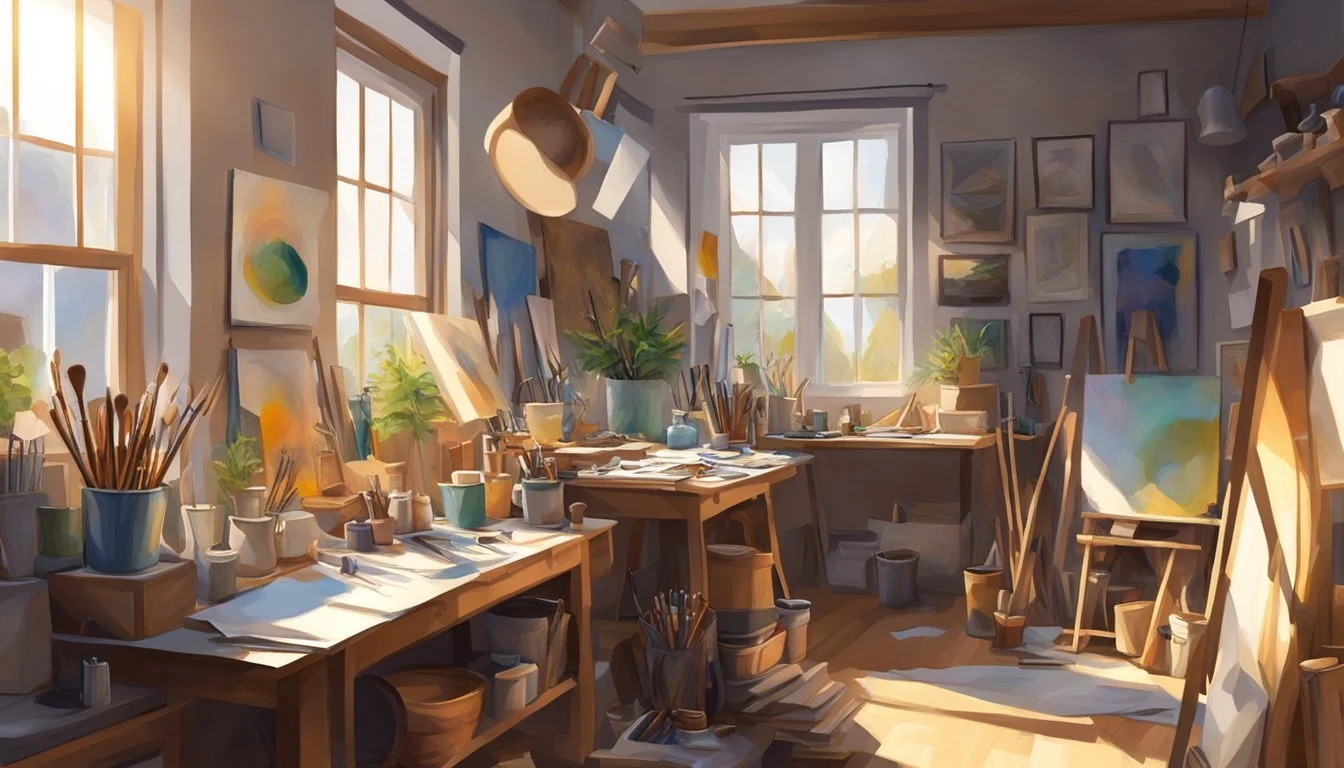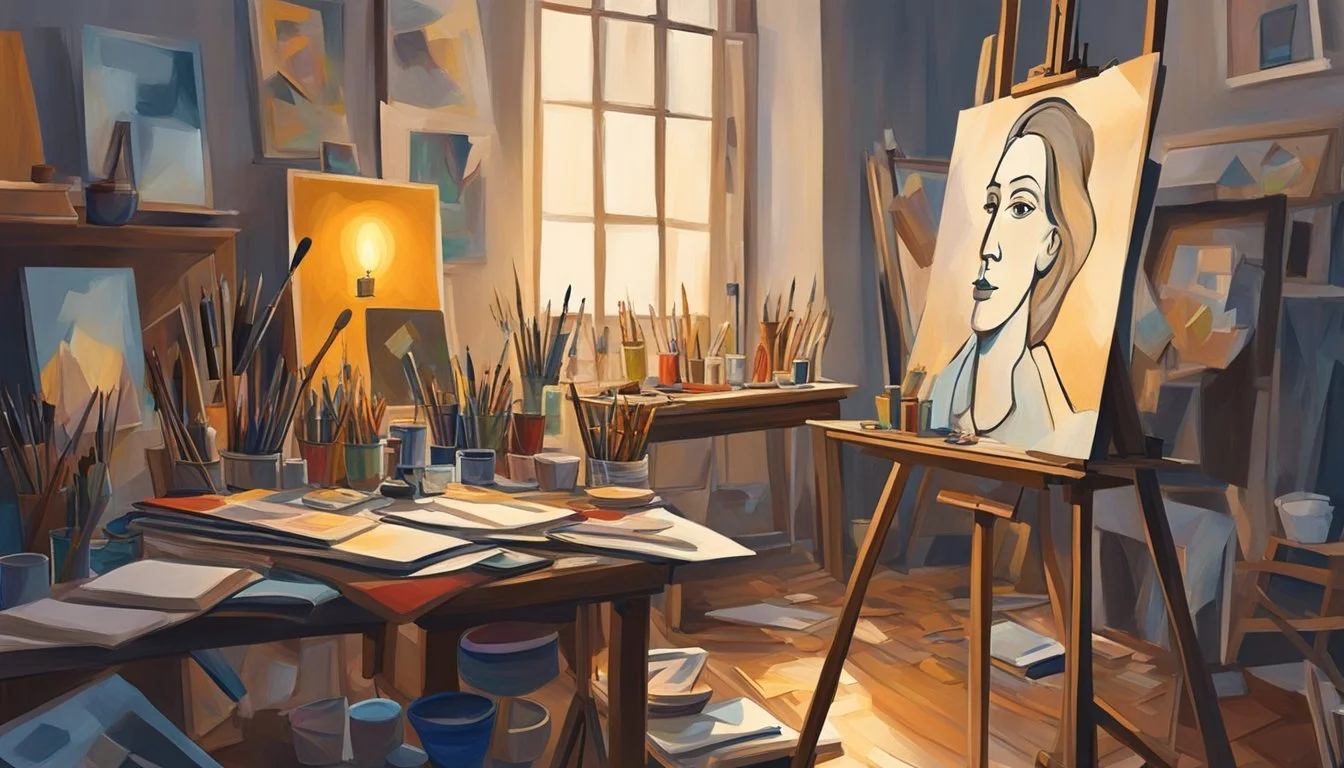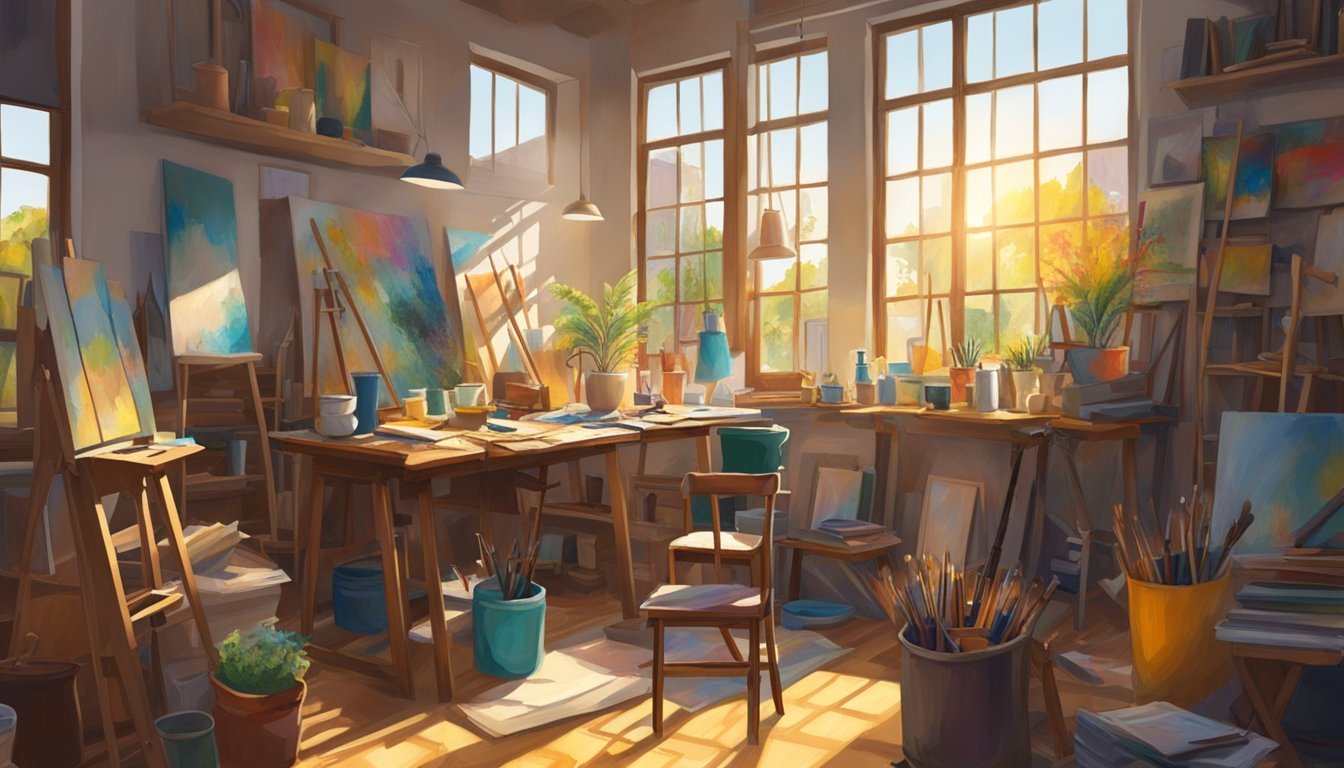Genius: Picasso - The Women Behind the Artist's Masterpieces
Muses and Models Who Shaped His Art
Pablo Picasso, one of the most influential artists of the 20th century, drew profound inspiration from the women in his life. These muses played crucial roles in shaping his artistic vision and career trajectory. From Fernande Olivier to Marie-Thérèse Walter and Dora Maar, each woman left an indelible mark on Picasso's work, influencing his style and subject matter during distinct periods of his artistic journey.
Picasso's relationships with his muses were complex and often tumultuous. The artist's romantic entanglements fueled his creativity, resulting in some of his most iconic masterpieces. His portraits of these women reveal not only their physical attributes but also capture the essence of their personalities and the nature of their relationships with the artist.
The impact of Picasso's muses extended far beyond mere artistic inspiration. These women were integral to his personal life and professional development, acting as confidantes, models, and collaborators. Their presence in his art offers a unique lens through which to examine Picasso's evolving artistic style and his perspective on love, beauty, and the human form.
Early Life and Artistic Beginnings
Pablo Picasso displayed extraordinary artistic talent from a young age. His early works and evolving style laid the foundation for his revolutionary contributions to 20th century art.
Blue Period
Picasso's Blue Period spanned from 1901 to 1904. During this time, he created somber works predominantly in shades of blue and blue-green. The artist drew inspiration from his experiences with poverty and depression in Paris.
Themes of melancholy, isolation, and human suffering dominated his paintings. Notable works include "La Vie" (1903) and "The Old Guitarist" (1903-04).
Picasso's use of monochromatic blue tones conveyed emotional depth and set the stage for his artistic innovations.
Rose Period
From 1904 to 1906, Picasso transitioned into his Rose Period. This phase marked a shift to warmer colors and more optimistic subjects.
The artist's palette incorporated pinks, reds, and oranges. Circus performers, harlequins, and acrobats became recurring motifs in his work.
Key paintings from this era include "Family of Saltimbanques" (1905) and "Boy with a Pipe" (1905). Picasso's style during the Rose Period showed increased confidence and technical skill.
African-Influenced Phase and Cubism
In 1907, Picasso entered a groundbreaking phase inspired by African art. This period culminated in the creation of "Les Demoiselles d'Avignon," a pivotal work in the development of Cubism.
Picasso, along with Georges Braque, pioneered Cubism from 1907 to 1914. This revolutionary art movement broke from traditional perspective and representation.
Cubist works fragmented objects and figures into geometric forms. Picasso's "Portrait of Daniel-Henry Kahnweiler" (1910) exemplifies analytical Cubism.
The movement's influence extended beyond painting, reshaping sculpture and architecture. Cubism laid the groundwork for abstract art and modernism in the 20th century.
Picasso's Muses and Their Impact on His Work
Pablo Picasso's artistic journey was profoundly influenced by the women in his life. These muses inspired shifts in his style, subject matter, and emotional expression throughout his career.
Fernande Olivier and the Creation of Cubism
Fernande Olivier, Picasso's first significant partner, played a crucial role during his Rose Period and the birth of Cubism. Their relationship coincided with Picasso's experimentation with geometric forms and multiple perspectives.
Olivier's distinctive features, including her almond-shaped eyes and oval face, appeared in numerous works from 1904 to 1912. Her presence inspired Picasso to break away from traditional representation.
The painting "Les Demoiselles d'Avignon" (1907), a cornerstone of Cubism, bears traces of Olivier's influence. Her form can be seen in the angular figures that marked Picasso's transition to a revolutionary artistic style.
Olga Khokhlova and the Neoclassical Phase
Olga Khokhlova, a Russian ballerina, became Picasso's first wife in 1918. Her arrival in Picasso's life coincided with his shift towards a more classical style.
During their marriage, Picasso produced numerous portraits of Olga in a naturalistic manner. These works showcased a return to traditional techniques and proportions.
The painting "Portrait of Olga in an Armchair" (1918) exemplifies this period. It depicts Olga with refined elegance, reflecting her background in classical ballet.
Picasso's neoclassical phase, influenced by Olga, demonstrated his versatility as an artist. It marked a temporary departure from his earlier avant-garde approaches.
Marie-Thérèse Walter and the Surrealist Influence
Marie-Thérèse Walter, whom Picasso met in 1927, inspired a surge of sensual and dream-like works. Her youthful vitality and curvaceous figure led to a new phase in Picasso's art.
Walter's presence coincided with Picasso's exploration of Surrealism. Her form often appeared in vibrant colors and fluid, organic shapes.
"Le Rêve" (The Dream, 1932) is a prime example of Walter's influence. The painting depicts her in a state of peaceful slumber, with distorted yet harmonious forms.
Picasso's sculptures from this period, such as "La Lecture" (1932), also reflect Walter's impact. They showcase voluptuous, abstract forms inspired by her physique.
Dora Maar and the Depiction of Guernica
Dora Maar, a Surrealist photographer, became Picasso's muse during a turbulent period in European history. Her presence coincided with the creation of "Guernica" (1937), Picasso's monumental anti-war painting.
Maar documented the creation of "Guernica" through photographs. Her emotional intensity and intellectual depth influenced Picasso's portrayal of anguish in the painting.
The "Weeping Woman" series (1937) was directly inspired by Maar. These works depict her in states of extreme distress, reflecting the era's political turmoil.
Picasso's portraits of Maar often feature sharp angles and fractured forms. They convey psychological complexity and inner torment, mirroring the artist's perception of her personality.
Françoise Gilot and Creative Renewal
Françoise Gilot, an artist in her own right, brought a sense of renewal to Picasso's work in the post-war years. Their relationship coincided with a period of optimism and vitality in his art.
Gilot's youth and artistic background inspired Picasso to explore new themes and techniques. His paintings from this period often feature bright colors and joyful subjects.
"La Femme-Fleur" (1946) depicts Gilot as a flower-woman, symbolizing growth and creativity. This work exemplifies the more lighthearted and celebratory tone of Picasso's art during their time together.
Picasso's ceramic works, which he began in earnest during his relationship with Gilot, reflect her influence. These pieces showcase a playful approach to form and decoration.
Jacqueline Roque and the Late Masterpieces
Jacqueline Roque, Picasso's second wife and final muse, was a constant presence in his late works. Her distinctive features appeared in numerous paintings and prints from 1954 until Picasso's death in 1973.
Roque's dark eyes and strong profile inspired a series of reinterpretations of classical masterpieces. Picasso's variations on Velázquez's "Las Meninas" often include Roque's likeness.
The painting "Jacqueline with Flowers" (1954) demonstrates Picasso's late style. It combines bold lines, flattened forms, and vibrant colors to capture Roque's essence.
Picasso's final self-portraits often include Roque's presence, highlighting her significance in his life and work. These pieces reflect a sense of legacy and contemplation in his twilight years.
Major Works and Artistic Phases
Picasso's artistic career spanned multiple influential phases, each marked by groundbreaking works that redefined modern art. His creative journey encompassed revolutionary styles and responded to world events.
Invention of Cubism
Picasso co-founded Cubism with Georges Braque in 1907. This revolutionary style fragmented objects into geometric shapes, presenting multiple viewpoints simultaneously. "Les Demoiselles d'Avignon" (1907) is considered a precursor to Cubism, featuring distorted figures and angular forms.
Analytical Cubism emerged from 1909 to 1912, characterized by muted colors and intricate fragmentation. "Portrait of Ambroise Vollard" (1910) exemplifies this phase with its complex, faceted surface.
Synthetic Cubism followed, incorporating collage and mixed media. "Still Life with Chair Caning" (1912) combines oil paint with a piece of oilcloth, blurring the lines between painting and sculpture.
Surrealism and the Spanish Civil War
In the 1930s, Picasso's work took on Surrealist elements. "The Dream" (1932) features fluid, biomorphic forms and vibrant colors, depicting his mistress Marie-Thérèse Walter in a dreamlike state.
The Spanish Civil War profoundly impacted Picasso's art. "Guernica" (1937), his most famous political work, responds to the bombing of Guernica, Spain. This monumental painting uses stark black, white, and gray tones to depict the horrors of war.
During this period, Picasso also created the "Weeping Woman" series, portraying the anguish of his lover Dora Maar. These works blend Cubist elements with raw emotional expression.
Later Works and Neoclassicism
Picasso's later career saw a return to more traditional styles. His Neoclassical period, which began in the 1920s and resurfaced later, featured softer lines and more naturalistic forms.
"The Old Guitarist" (1903-1904), though earlier, exemplifies Picasso's ability to convey emotion through simplified forms. This Blue Period work showcases his mastery of monochromatic palettes.
In his final years, Picasso revisited and reinterpreted works by Old Masters. His series based on Velázquez's "Las Meninas" (1957) demonstrates his enduring creativity and ability to innovate within traditional subject matter.



